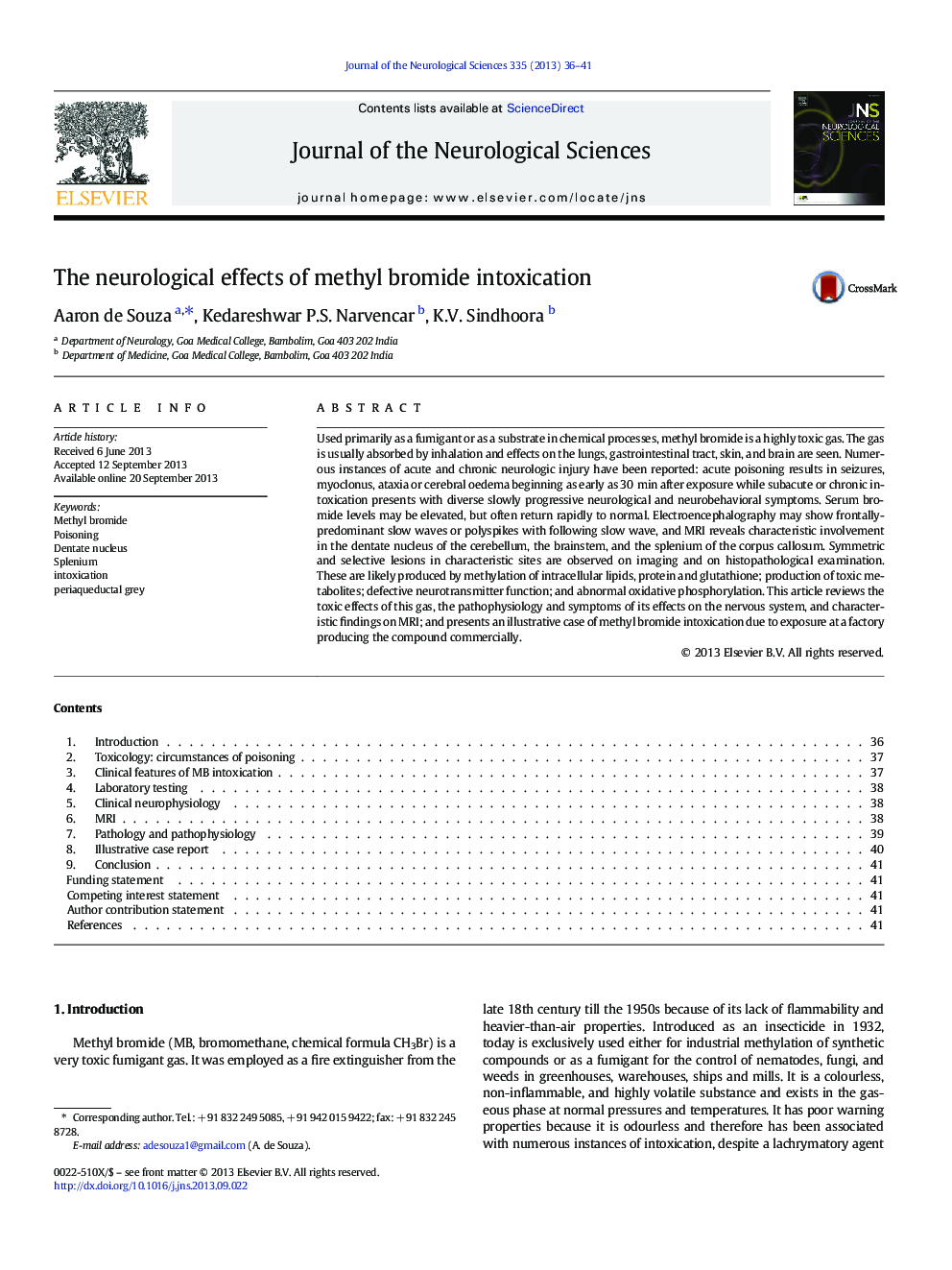| Article ID | Journal | Published Year | Pages | File Type |
|---|---|---|---|---|
| 1913686 | Journal of the Neurological Sciences | 2013 | 6 Pages |
Used primarily as a fumigant or as a substrate in chemical processes, methyl bromide is a highly toxic gas. The gas is usually absorbed by inhalation and effects on the lungs, gastrointestinal tract, skin, and brain are seen. Numerous instances of acute and chronic neurologic injury have been reported: acute poisoning results in seizures, myoclonus, ataxia or cerebral oedema beginning as early as 30 min after exposure while subacute or chronic intoxication presents with diverse slowly progressive neurological and neurobehavioral symptoms. Serum bromide levels may be elevated, but often return rapidly to normal. Electroencephalography may show frontally-predominant slow waves or polyspikes with following slow wave, and MRI reveals characteristic involvement in the dentate nucleus of the cerebellum, the brainstem, and the splenium of the corpus callosum. Symmetric and selective lesions in characteristic sites are observed on imaging and on histopathological examination. These are likely produced by methylation of intracellular lipids, protein and glutathione; production of toxic metabolites; defective neurotransmitter function; and abnormal oxidative phosphorylation. This article reviews the toxic effects of this gas, the pathophysiology and symptoms of its effects on the nervous system, and characteristic findings on MRI; and presents an illustrative case of methyl bromide intoxication due to exposure at a factory producing the compound commercially.
